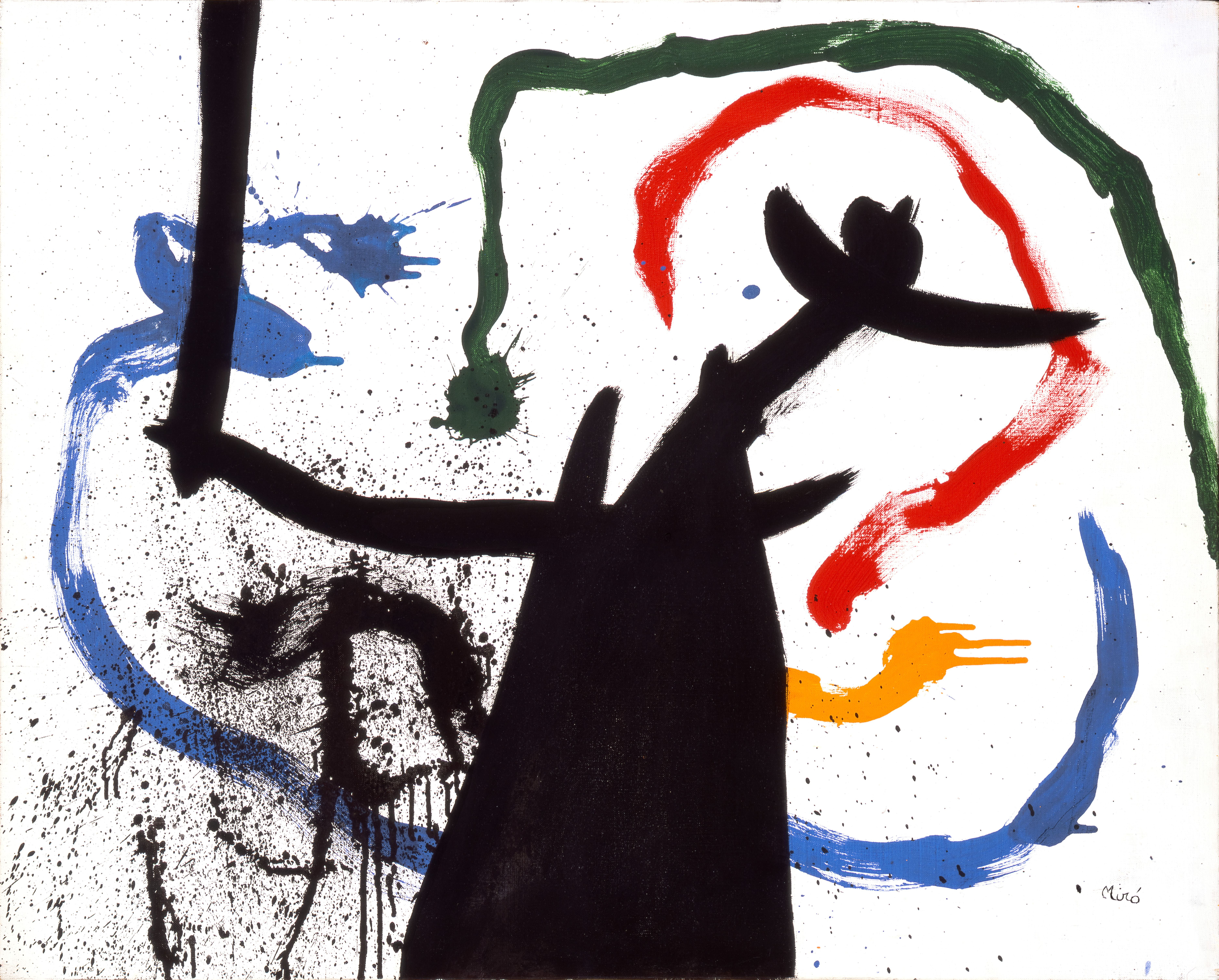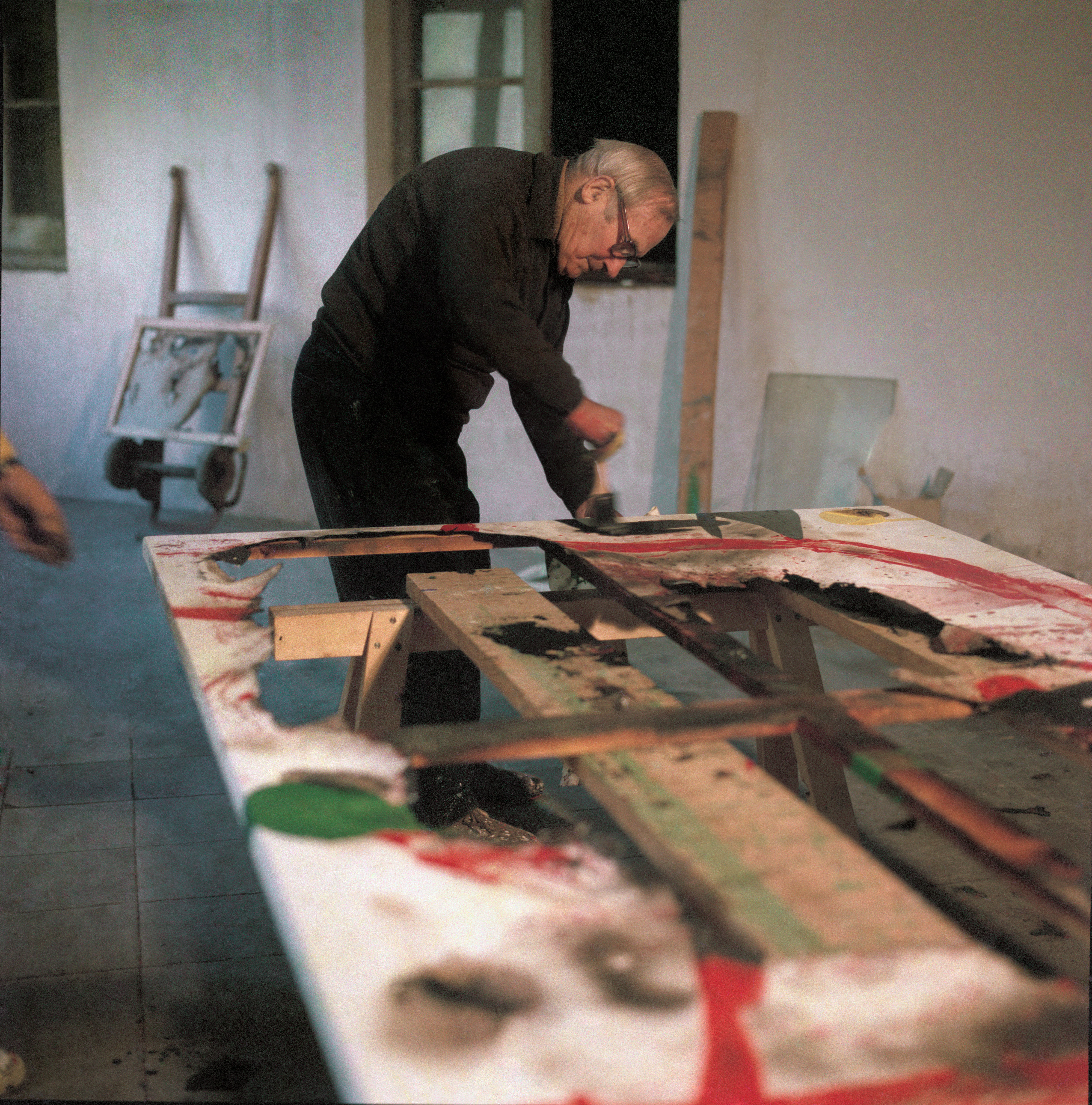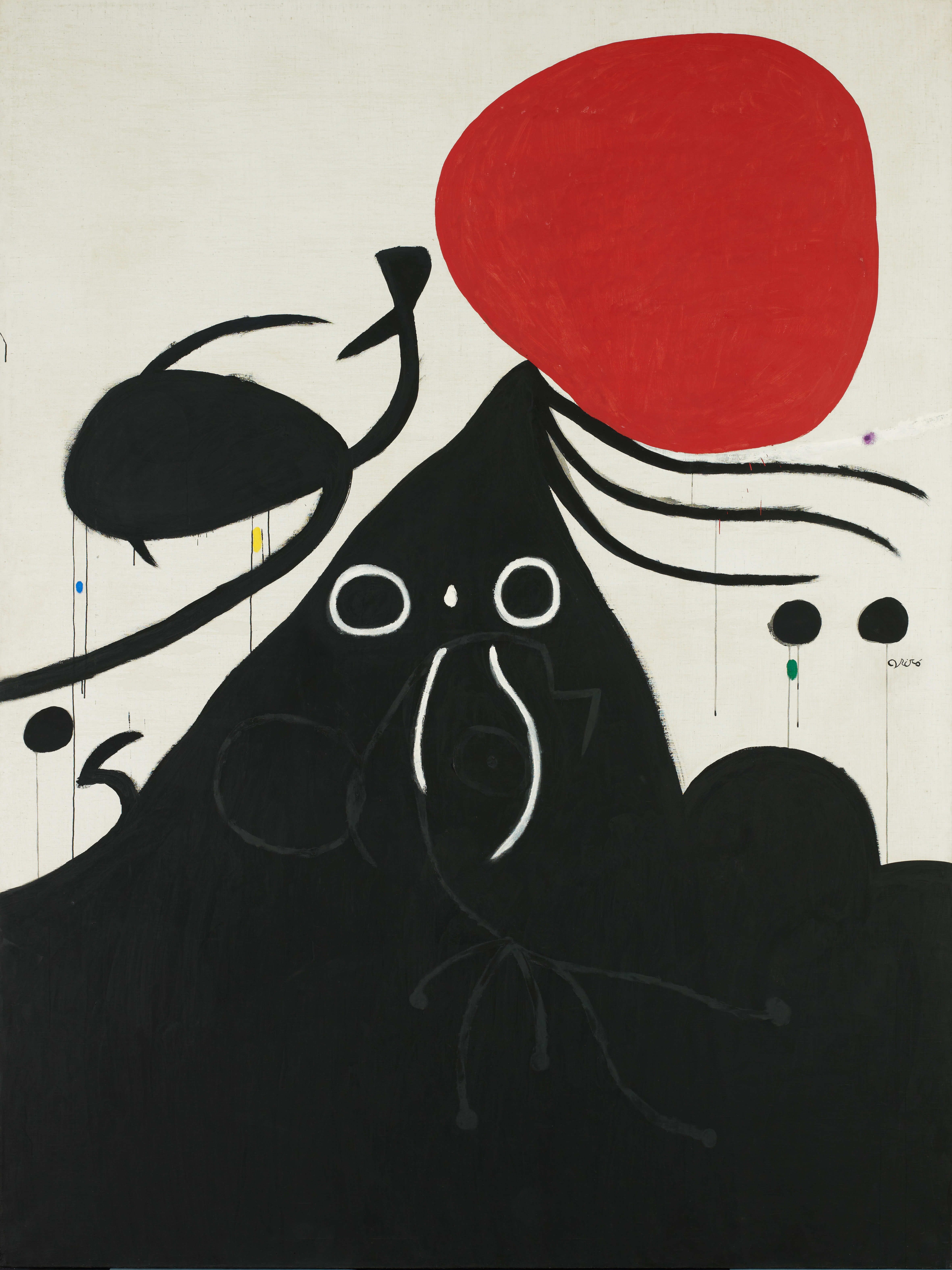Joan Miró, Burnt Canvas 2, 1973, Acrylic on cut and burnt canvas, 195 x 130 cm, Fundació Joan Miró, Barcelona, on loan from a private collection | Photo: © Joan Ramon Bonet, Successió Miró Archive © Successió Miró / 2022, ProLitteris, Zurich
Thus wrote Joan Miró about his German colleague fourteen years his senior. Although the two have never met in person, the encounter with the work of Paul Klee lasted for a long time leaving a deep mark on Miró’s style.
Both painters, for example, shared a common passion for childhood drawings and rock art, influences particularly evident in the reduced formal language that unites the works of the two.
Now, thanks to the exhibition Joan Miro. New Beginnings, wait from 28 January until 7 May at the Zentrum Paul Klee in Bern, curated by Fabienne Eggelhöfer, Miró will finally be able to encounter Klee’s work known in Paris thanks to André Masson.

Joan Miró, Woman and Birds, 1969, Oil on canvas, 81 x 65 cm, Fundació Joan Miró, Barcelona, on loan from a private collection | Photo: © Joan Ramon Bonet, Successió Miró Archive © Successió Miró / 2022, ProLitteris, Zuric
In fact, the Bern museum is preparing to host a large exhibition dedicated to the late and little-known work of the Catalan artist. The large-format works show a surprisingly raw side even for Miró lovers, and are distinguished by a constant search for new forms of expression. An example of this change of course is in fact constituted by the “burnt canvases”, works painted with fire rather than with a brush, but also using scissors and a wet broom: an authentic act of destruction that generated a new creativity in the painter.
Known for his colorful surrealist dream worlds created between 1920 and 1930, Miró began early to question traditional painting. Especially after the long-awaited move to his large studio in Palma de Mallorca in 1956, the Catalan artist extended his concept of painting in a hitherto unknown direction, revisiting previous work or completing unfinished works. This moment of self-criticism and a new beginning marks the starting point of the exhibition at the Zentrum Paul Klee.

Joan Miró working on one of his burnt canvases, 1973 | Photo: © Francesc Català-Roca © Photographic Archive F. Català-Roca – Arxiu Històric del Col·legi d’Arquitectes de Catalunya
The itinerary embraces 74 works, mainly created between the end of the 1960s, the 1970s and the early 1980s, coming from Fundació Joan Miró of Barcelona and the Pilar and Joan Miró Foundation of Mallorca, many of which are shown in Switzerland for the first time.
In Palma, the artist’s life and work were marked by many changes. Until the outbreak of the Spanish Civil War in 1936 Miró spent about four months a year in Paris and the rest of his time in Spain, in Barcelona or Mont-roig, where his family had a house in the countryside. Constantly in contact with the Parisian art scene, in Spain he was able to devote himself to work without distractions. The outbreak of the Spanish Civil War forced the Miró family to stay in France between 1936 and 1940. After the invasion of German troops in 1940 the Mirós returned to fascist Spain where Joan worked in a modest studio in Barcelona as well as in the house campaign of Mont-roig until the end of the Second World War. Despite these upheavals, his work was enormously fruitful in those years. In his new studio in Palma, Miró was finally able to put together all the boxes with the works created up to that moment. As he began to unpack and rearrange them, he began to review his paintings, drawings, sketches, notebooks.

Joan Miró, Woman Facing the Sun, 1974, Acrylic on canvas, 194 x 258.5 cm, Fundació Joan Miró, Barcelona | Photo: © Jaume Blassi © Successió Miró / 2022, ProLitteris, Zurich
“In the new studio I had enough space for the first time. I was able to unpack crates of works that go back years and years. I hadn’t seen these things since I left Paris […] before the war. […] When I finally unpacked them in Mallorca, it went through a process of self-analysis.”
After this critical “self-examination”, Miró began looking for new forms of expression. He felt that conventional easel painting was a limitation, he went in search of new forms of expression by distancing himself from his earlier works influenced by surrealism and developing a simpler and more universal pictorial language. His art had to be accessible to all and easily understood.
An example of this change of course are the “burnt canvases”, works painted with fire rather than with a brush, but also using scissors and a wet broom. Miró then extended his technique to the so-called “sobreteixims”, where he combined tapestry, collage and painting. He worked with classic overpainted fabrics or paintings bought at the flea market, made with impulsive brushstrokes and simple poetic signs such as circles, stars and crescent moons.

